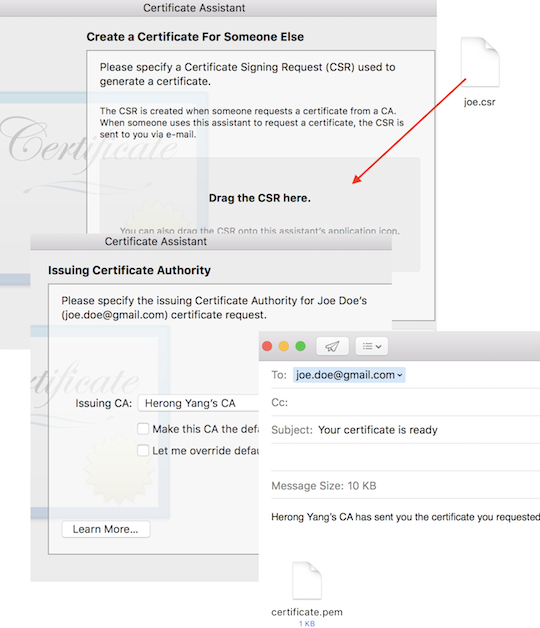

- MACOS SERVER CERTIFICATES INSTALL
- MACOS SERVER CERTIFICATES UPDATE
- MACOS SERVER CERTIFICATES FULL
Each invocation of certbot creates a new log file in /var/log/letsencrypt, so a new line at the end of the certificate import script above cleans out all but the last ten log files. (It’s possible to modify its environment with the EnvironmentVariables key, but this is more concise.) MACOS SERVER CERTIFICATES FULL
The launchd item uses a full path to certbot because its parent directory, /usr/local/bin, is not in the $PATH of the environment used by launchd items. Assuming an SSL variant of your site already exists (check the list in “Websites”), select the new certificate from the “Secure services using:” popup to start using it. If you now open Server.app and click on “Certificates”, you should see your new certificate listed there. 2 certificates imported.” indicates the script ran successfully. Sudo /etc/letsencrypt/renewal-hooks/deploy/keychain-import.sh Sudo chmod +x /etc/letsencrypt/renewal-hooks/deploy/keychain-import.sh MACOS SERVER CERTIFICATES UPDATE
Update 2022-03: Based on feedback, reordered logic and added a restart of the web server to ensure the new certificate completely replaces the old. # Clean up old certbot log files rm -f /var/log/letsencrypt/letsencrypt.log.?

Openssl pkcs12 -export -inkey " $ | grep "1)" | cut -d " " -f 4 ) /Library/Keychains/System.keychainĭone # Restart web server so it uses the new certificates # Loop through subdirectories of /etc/letsencrypt/liveįind /etc/letsencrypt/live -type d -maxdepth 1 -mindepth 1 | while read PEM_FOLDERĭOMAIN = $( basename $PEM_FOLDER ) # Generate a passphrase PASS = $(openssl rand -base64 45 | tr -d / =+ | cut -c -30 ) # Transform the pem files into a p12 file #!/bin/sh & echo "Must be run as root." & exit 1 (Older tutorials may refer to the package’s original name, letsencrypt.)
MACOS SERVER CERTIFICATES INSTALL
Use Homebrew to install certbot, which handles the creation and renewal of certificates from Let’s Encrypt. a domain name configured in public DNS to point to your IP address.
 an internet connection with a fixed IP address. port 80 and 443 configured on your router to forward to your Mac. (Mine is still running OS X 10.11 yours should probably be something newer.) a Mac running some version of macOS Server. It’s a typical situation: some new technology has issues in specific situations, several posts appear with their own workarounds, fixes get implemented upstream, but the original posts are never updated. Although the numerous posts throughout the internet were helpful in writing this post, none offered a clean, up-to-date solution. Apple’s many modifications to its implementation of Apache initially made integrating with Let’s Encrypt difficult, and while most of the issues have been largely worked out, getting renewal to work reliably has been a sticking point. I have a Mac running macOS Server providing several services behind a domain name that I’d like to secure with a certificate from Let’s Encrypt, and have it automatically renew.
an internet connection with a fixed IP address. port 80 and 443 configured on your router to forward to your Mac. (Mine is still running OS X 10.11 yours should probably be something newer.) a Mac running some version of macOS Server. It’s a typical situation: some new technology has issues in specific situations, several posts appear with their own workarounds, fixes get implemented upstream, but the original posts are never updated. Although the numerous posts throughout the internet were helpful in writing this post, none offered a clean, up-to-date solution. Apple’s many modifications to its implementation of Apache initially made integrating with Let’s Encrypt difficult, and while most of the issues have been largely worked out, getting renewal to work reliably has been a sticking point. I have a Mac running macOS Server providing several services behind a domain name that I’d like to secure with a certificate from Let’s Encrypt, and have it automatically renew.







 0 kommentar(er)
0 kommentar(er)
